Ensenada, Mexico
Hello, and happy Saturday to all our friends out there. Can you believe it has already been 2 months? Time flies when you’re having, well, let’s just say it’s fun not having to shovel snow…
Today we are south of the border in Ensenada (which translates to Sea Bay). This Mexican jewel is located 75 miles south of Tijuana and the U.S. border. It’s 450,000 resident’s credit themselves as the originators of the yummy Baja-style seafood tacos. However, their biggest claim to fame is that of local bartender Don Carlos Orozco, who allegedly named a new drink after his frequent cantina customer, Margarita Henkel Cesena. (I’ll give you a hint. The drink is not called a “Henkel Cesena with a twist!”) Coincidentally, this all happened in the 1920s, when the city gained international interest during the (US) prohibition era…
Eager to apply our new knowledge of the area (just kidding…) we headed out this morning to check out a local farm/and cheese cave, and their neighboring winery’s libations!
During our one-and-a half hour drive out of the city, our guide explained that, while Ensenada has many miles of beautiful beaches, most locals opt to drive 3-hour to swim in the warmer, calmer waters of The Sea of “Cortez” (hmmm) to the east.
She also told us that new businesses are not required to pay taxes for their first three months. This is a problem, because there is rampant foodborne illnesses. It turns out that there are not any inspections requirements during the 3-month grace period. Also, many business owners close-up shop and move to a new location after 3 months. So basically, the locals avoid eating out and shopping at grocery stores until they’ve been around for a while. Eeek!
Also, did you know that Ensenada citizen are able to attend school, including local public universities, at no cost? This is unique for Mexico. We came to understand that some cities in Mexico charge parents for their kids to go to (all grades at) their public schools.
🙁
As we headed through the mountains outside of the city, we passed many beautiful villas and scenic grasslands. Much of the landscape reminded me of the high deserts of Northern New Mexico. (We even passed turnoffs to hot springs!) Surprisingly, the city as well as the surrounding mountains are all part of the state of Baja California, whose capital is Mexicali, Mexico. (I had always thought of Baja as a desert peninsula. Now I know otherwise.)
Eventual we arrived in the Ojos Negros valley, with its snowcapped peaks on the horizon, and its grazing dairy cattle in the meadows. (Ojos Negros translates to “black eyes”, which is a reference to the pair of dark-colored marshes that can be seen from the rim of the valley as you enter it from above.)
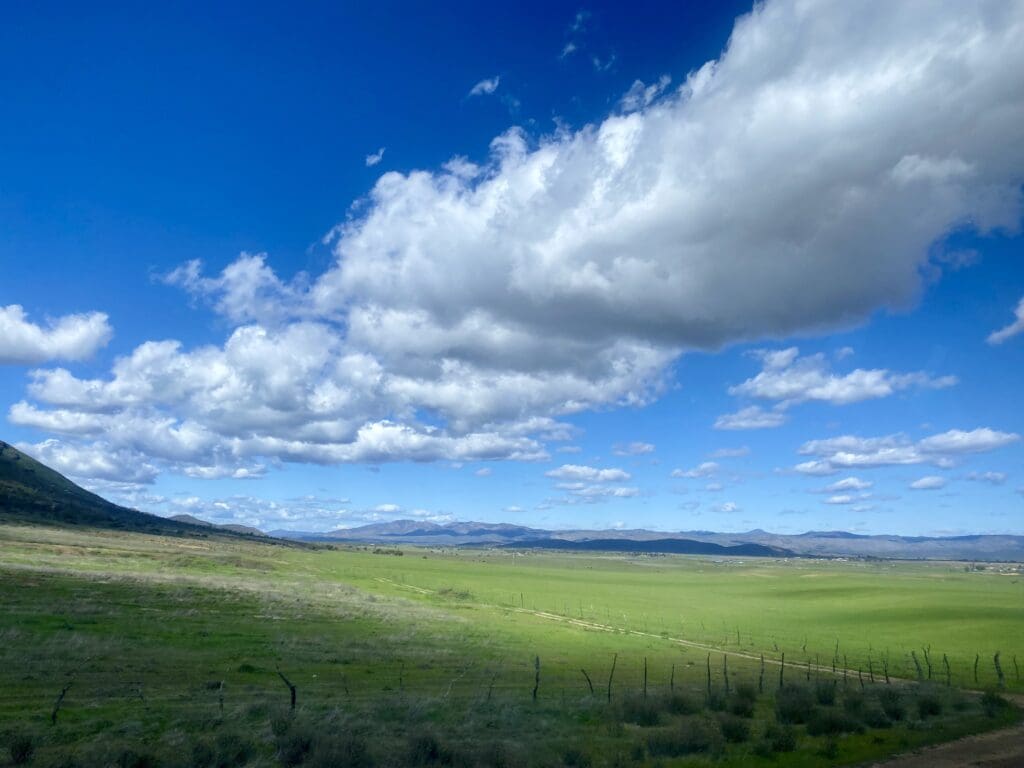
Our destination was La Capuana Ranch, home of “Smiley” (the happy cheese dog) and the La Cava de Marcelo (Cheese Cave). The owner, with help from his daughter’s neighboring winery, hosted us for a lunch and a lesson in cheese making (with a little cattle ranching and ice cream making knowledge thrown in for good measure).
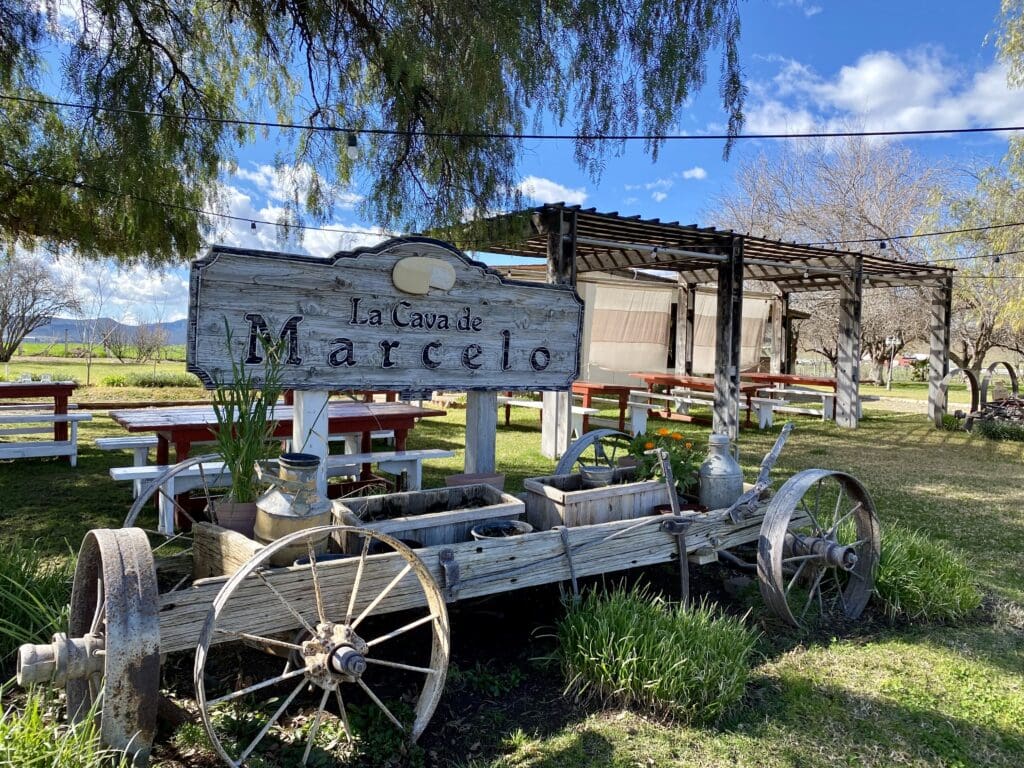
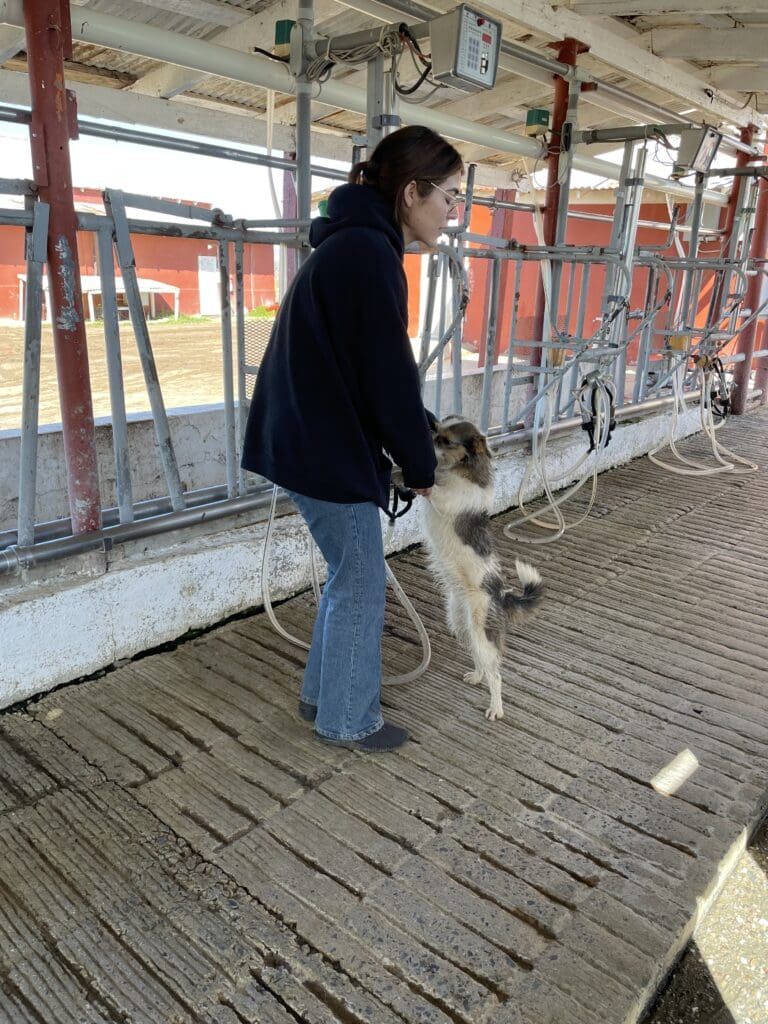

So, during our tour of the farm, we learned that their Black Pied Dairy cattle were originally brought in from Germany. This particular breed produces significantly more milk than their American (Guernsey cattle) cousins. Another unique feature of these animals is that they are always black and white.
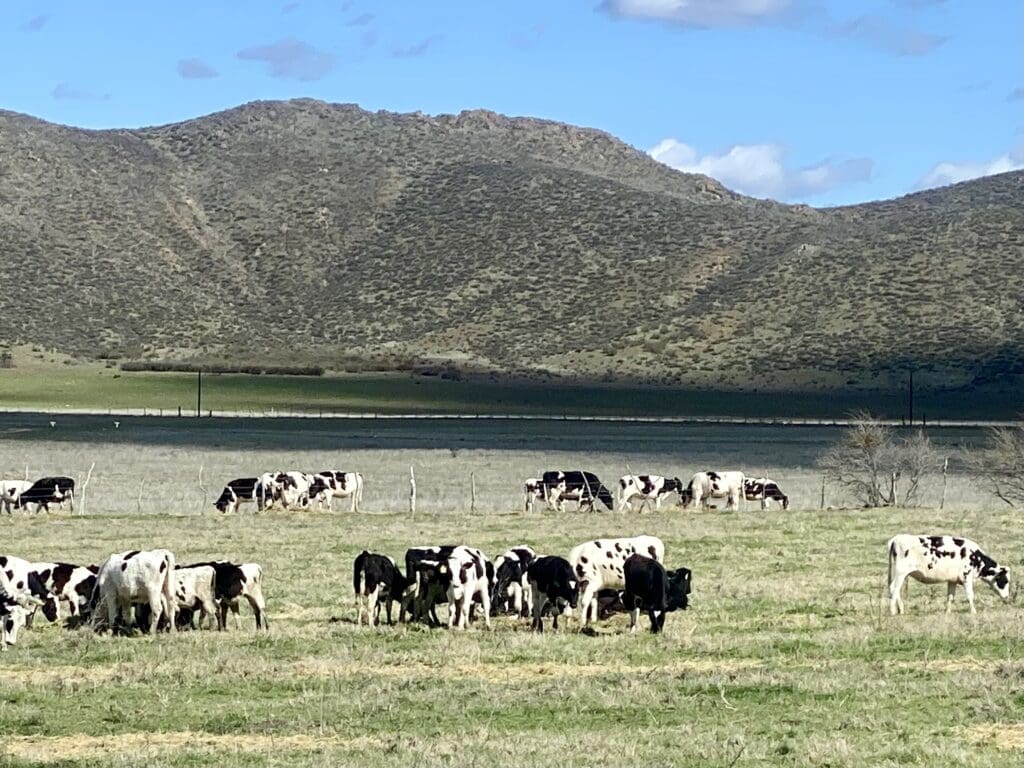
The first stop was to see how the cows are milked. Now, if you never felt sorry for a cow, consider this. These poor cows get milked at 3:00 every morning! (It makes me tired just thinking about it…) Then, after a leisurely morning, they hit them up again every afternoon. (So the poor critters have to work Graveyard and the swing shift!)
We also learned that one must manually milk a cow before hooking them up to the milking machine, and all of the cleaning and antibiotic procedures that go into making the automated milking process work.
So each milking, each cow gives 28 liters, which is about 7 Gallons). I do not recall how many cows they have, but they can’t use the milk during certain stages of pregnancy, etc. but I think I recall that they average 1,400 gallons of milk per day.
On Mondays they make butter, and Tuesday is their ricotta day. (Yum!) the remaking 5 days, they make queso (and a little ice cream, which was delicious).
Making cheese is done by letting the milk cool overnight, then placing 80 liters at a time in a double-lined vat and heating it to 86 degrees. (I found it curious that this particular farm referred to volumes using the metric system but used the imperial system when referring to temperatures, especially since Mexico has been using the metric system exclusively for over 125 years.)
At any rate, 86 degrees is apparently the same temperature that the milk is when it is inside the cow. After it reached temperature, a bacteria/enzyme is added, and a second batch of milk is added and heated, and the mixture is reheated to 86 degrees.
After cooling, the mixture curdles and solidifies before it is cut into cubes. The the curds and whey are then separated.
While the whey is used as feed for pigs, the curds are removed, placed in (round) forms, and weight is applied for a day or so to remove the remaining liquids. Interesting stuff!
2.5 gallons of milk makes two pounds of cheese. When the cheese is removed from the form, it is placed in their underground, temperature controlled (cool) cheese cave. These rounds are flipped every day and left to age between 2 weeks-2.5 years.
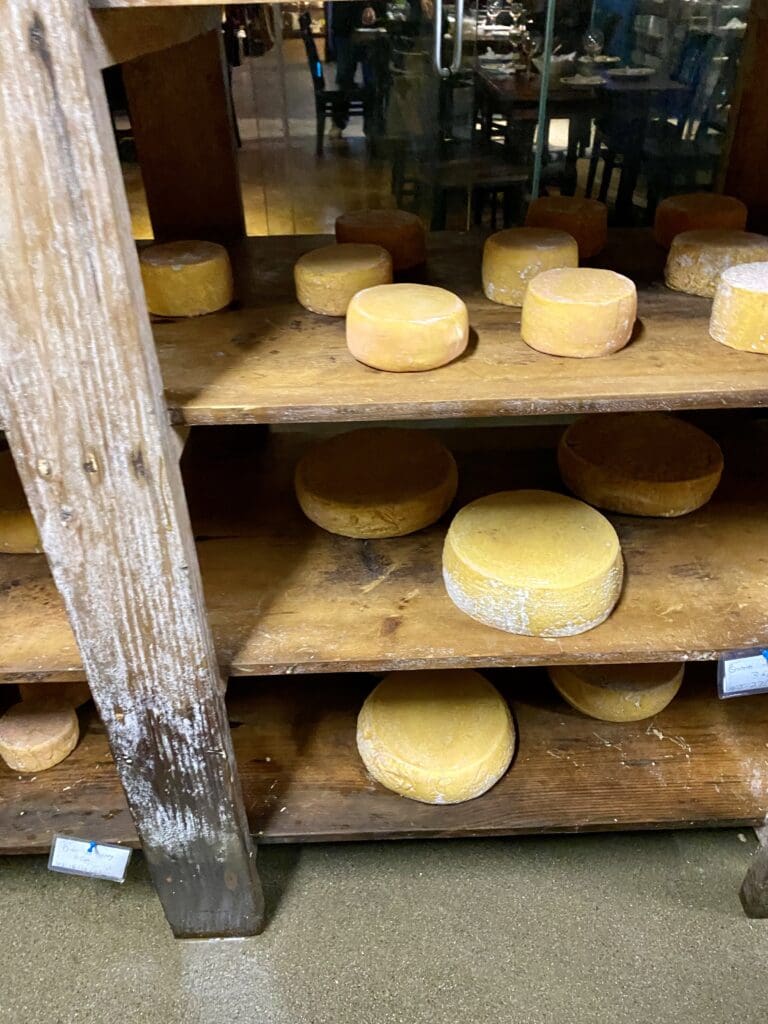
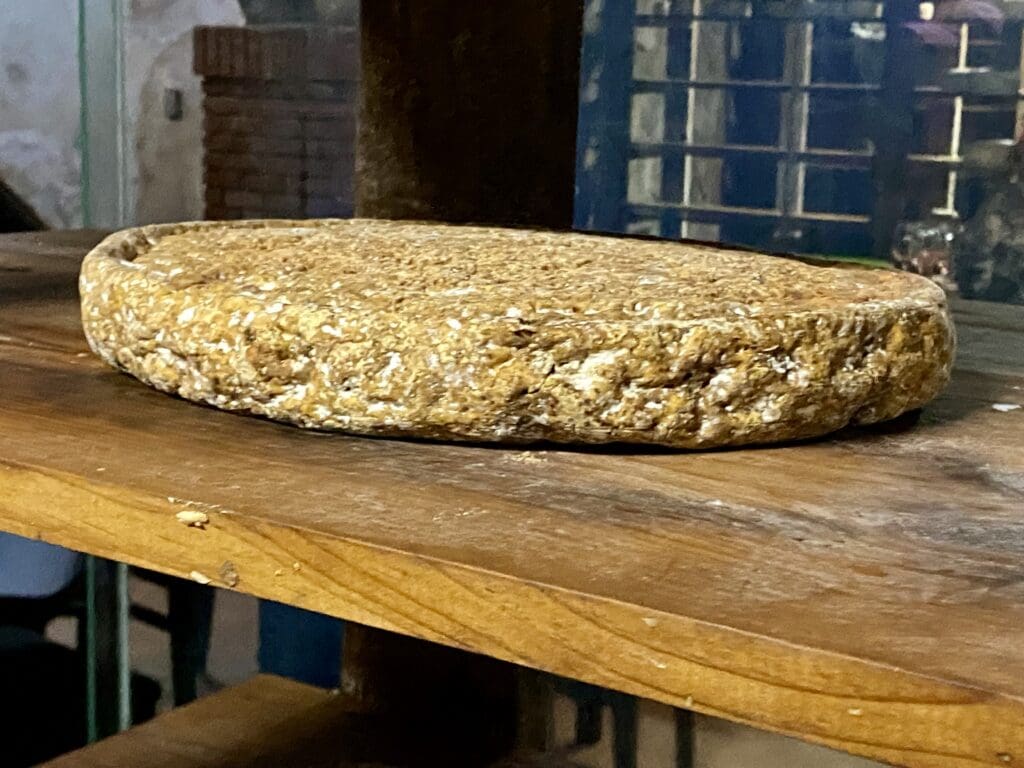
Eventually, the outside of the round is dried and brushed with a mixture that stops the cultivation/aging process. Afterwards, the round is brushed with an edible liquid wax.
After drying is my favorite part. Let’s eat some cheese!
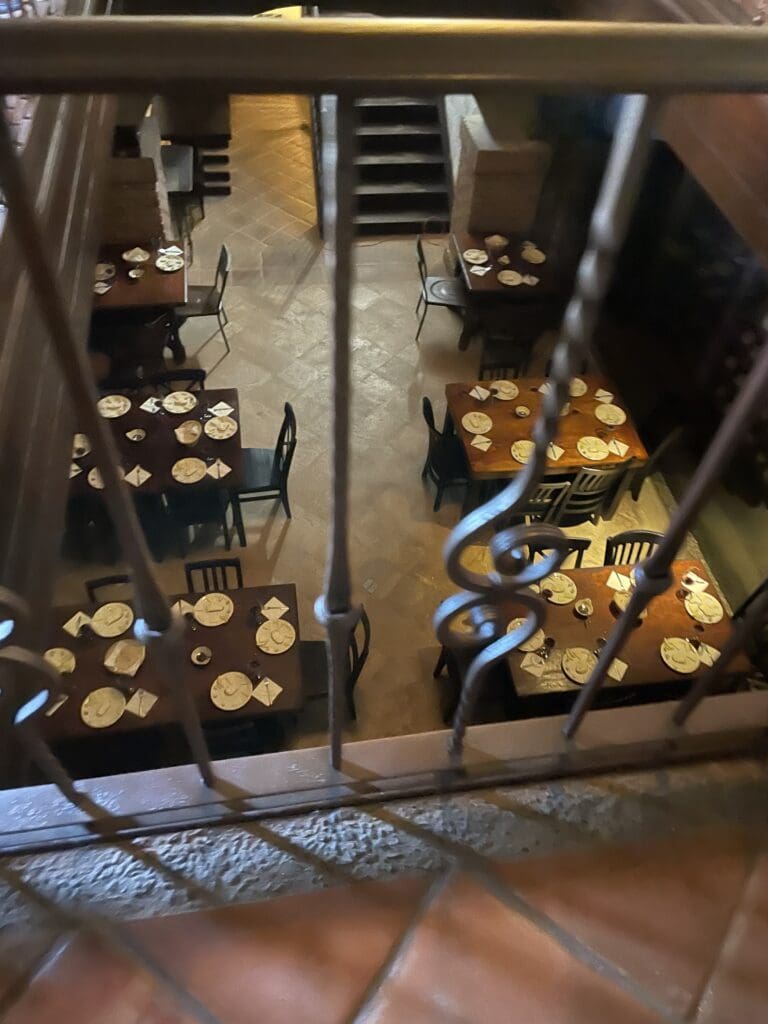
We were provided two cheese tastings. The first included a local wine. There were 7 different cheeses, served with apple slices (which are used to cleanse your pallet between cheeses). We started with the 2-week-old “Farmer’s Cheese” and worked our way around the plate with the cheeses getting older (and stronger) as we went. These included varieties which were made with black pepper, basil, rosemary, black olive, and other local ingredients. In the center of each plate was butter and ricotta that was made earlier in the week. They also had a delicious fig jam (which was also made down the road).
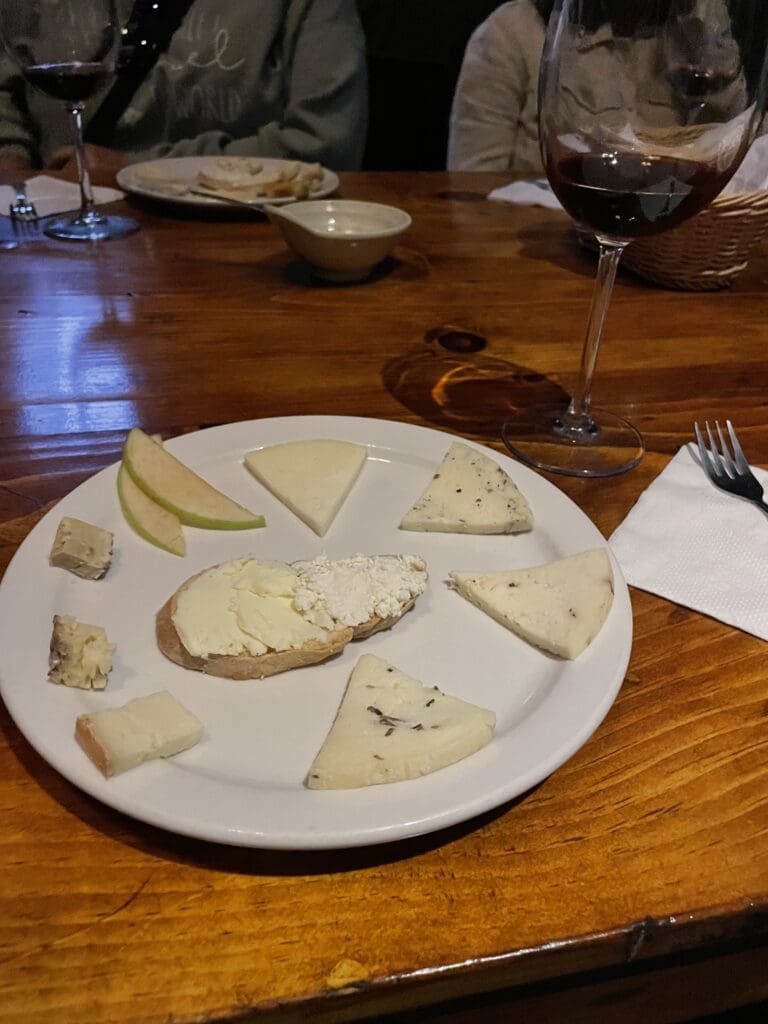
During our second round, we were given spicy cheeses made with habanero and (what they called) red chili. These were served with local beers. All were equally muy deliciosa.

After returning top-side (from the cheese cave) lunch was served at picnic tables in the meadow. The fresh local vegetables made for an outstanding salad. And we especially enjoyed the portobello mushroom stuffed with (you guessed it) cheese, all of which was chased down with michelada beers. Yum!
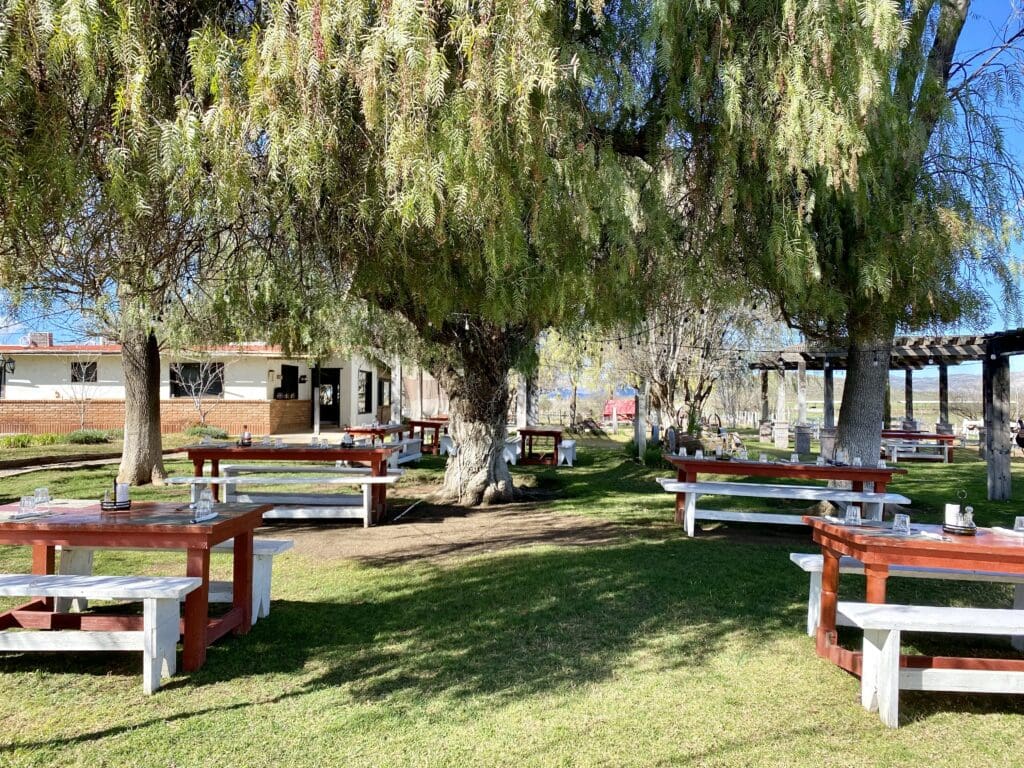
A siesta was enjoyed by all during our journey home.
I have to say, this was one of the best excursions we have taken. If you ever make it down to Ensenada, I definitely recommend visiting the La Cava de Marcelo Cheese Cave.
As we bid Mexico farewell, our bellies were content, but our souls are eager for our visit tomorrow to the City of Angels. Ahhh, but that is another story…
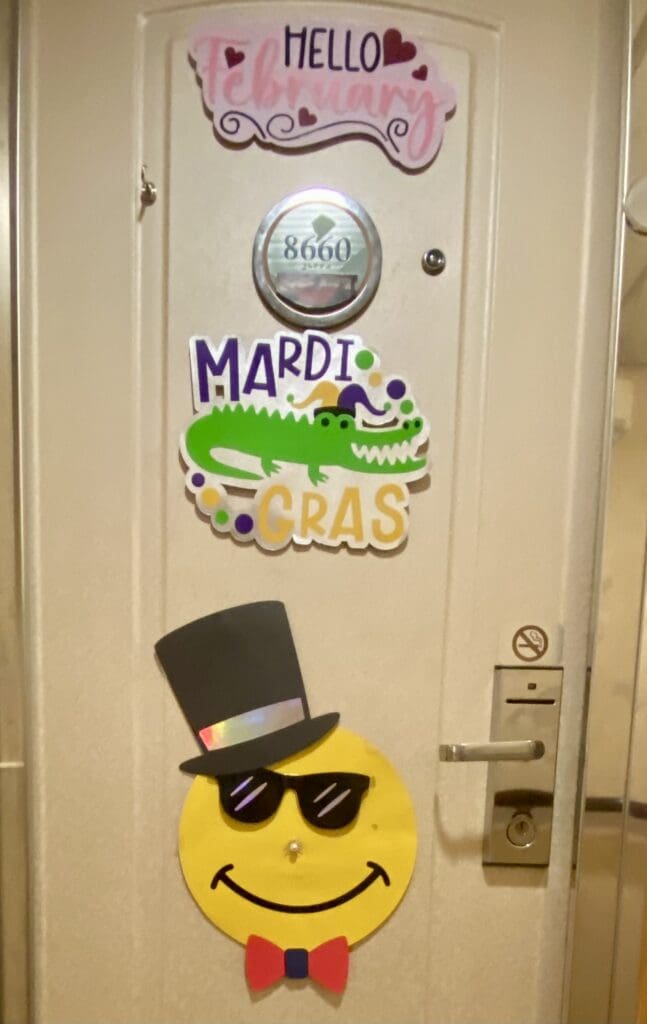
Gracias por visitar mi amigos.
– Mike“I don’t wanna be a pirate.” Jerry Seinfeld

Recent Comments